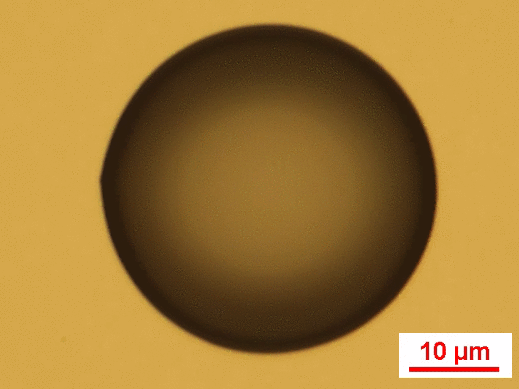
A new paper co-authored by Tony, a Ph.D. student in MSE, will appear in Advanced Materials(link here), a premier journal in our field.
About the Research
Prof. Aram Amassian’s group at North Carolina State University has demonstrated a novel strategy for fabricating hybrid perovskite single crystals using a simple drying droplet that may change how semiconductors are manufactured in the future.
“Single crystals are the highest quality embodiment of any semiconductor. They contain very few defects and imperfections compared to traditional thin films and significantly outperform these. But only Si, GaAs and a few other semiconductors have single crystal wafers on which to fabricate integrated circuits. Now, we can grow single crystals on glass and other substrates using printing technology”, says Prof. Aram Amassian, corresponding author of the paper on this work.
The team made a key innovation in ink formulation and processing, dubbed the “cosolvent evaporation (CSE) strategy”. This uses a cosolvent additive to guarantee the ink produces a single crystal every time it dries without leaving any residue or “coffee ring”. The CSE strategy now makes it possible to print single crystals of almost any known hybrid metal halide perovskite on surfaces, using widely available fabrication methods, making it a universal approach.
By applying the CSE strategy, the team demonstrated on-chip fabrication of high-quality microcrystal arrays and single crystal photonic devices, demonstrating the potential for future scalable manufacturing in the context of printed electronics. “By printing specially formulated inks, we can fabricate high-quality single crystal arrays on large area surfaces within minutes all the while doing this in ambient conditions. We foresee future implementation in the area of printed and flexible electronics applications towards IoT and the Trillion Sensors challenge.”
The paper “A Universal Cosolvent Evaporation Strategy Enables Direct Printing of Perovskite Single Crystals for Optoelectronic Device Applications”, is published in Advanced Materials (https://onlinelibrary.wiley.com/doi/10.1002/adma.202109862). Co-lead authors are Daniel Corzo, a former MS student in Prof. Amassian’s group at King Abdullah University of Science and Technology (KAUST), and Tonghui (Tony) Wang, a current PhD student in Materials Science and Engineering at NC State University.
This work was supported in part by an NSF grant (ECCS-1936527) led by Prof. Amassian in MSE and is a collaboration with the group of Prof. Dali Sun in Physics.
